Timeline: Interlocking Histories

The collection of Cooper Hewitt, Smithsonian Design Museum and its residence the Carnegie Mansion came together through a confluence of forces. Their interlocking histories began in the mid-nineteenth century, with other principal players entering throughout the ensuing centuries. This timeline weaves together the stories of the Hewitt sisters and the Cooper Union Museum for the Arts of Decoration, Andrew Carnegie and his Fifth-Avenue mansion, and the Smithsonian Institution to create Cooper Hewitt, Smithsonian Design Museum. Learn more about Cooper Hewitt’s history through the museum’s publications Sarah & Eleanor: The Hewitt Sisters, Founders of the Nation’s Design Museum (free) and Life of a Mansion: The Story of Cooper Hewitt, Smithsonian Design Museum.
Skip through time and design!
1846–1949: During the height of the Gilded Age, two sisters open a design museum and the richest man in the world takes on the Upper East Side of Manhattan.
1963–1988: As the century progresses and society advances, a mansion becomes a school and the Smithsonian saves a critical design resource.
1989–2016: Renovations to the now-one-hundred-year-old mansion-turned-museum take place and Cooper Hewitt enters the digital world of the twenty-first century.
1846
On August 10, the United States Congress passed legislation to found the Smithsonian Institution as an establishment dedicated to the “increase and diffusion of knowledge.” President James K. Polk signs it into law that same day.
1853
Construction begins on the Cooper Union for the Advancement of Science and Art (known as Cooper Union) on September 17. Founded by industrialist and inventor Peter Cooper, the school still stands at 7 E 7th Street, New York City.
1859
Cooper Union opens as “a free institution of the working classes of New York and its vicinity, in science and art.”
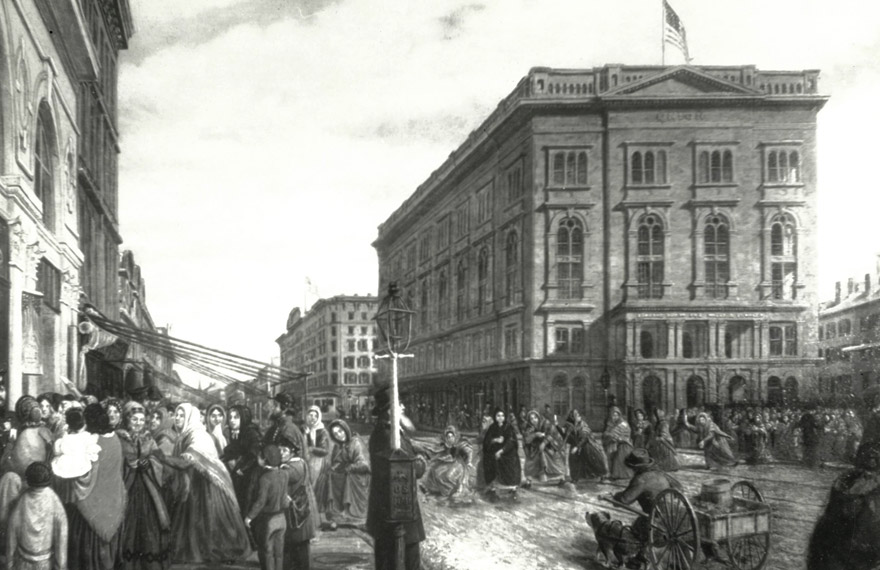
Cooper Union foundation building. Painting by Thomas Coke Ruckle (1808–1891), ca. 1861.
1897
Peter Cooper’s granddaughters, sisters Sarah (1859–1930) and Eleanor (1864–1924) Hewitt, establish the Cooper Union Museum for the Arts of Decoration. The museum opens as “a practical working laboratory,” a visual library for use by students, designers, and the general public.
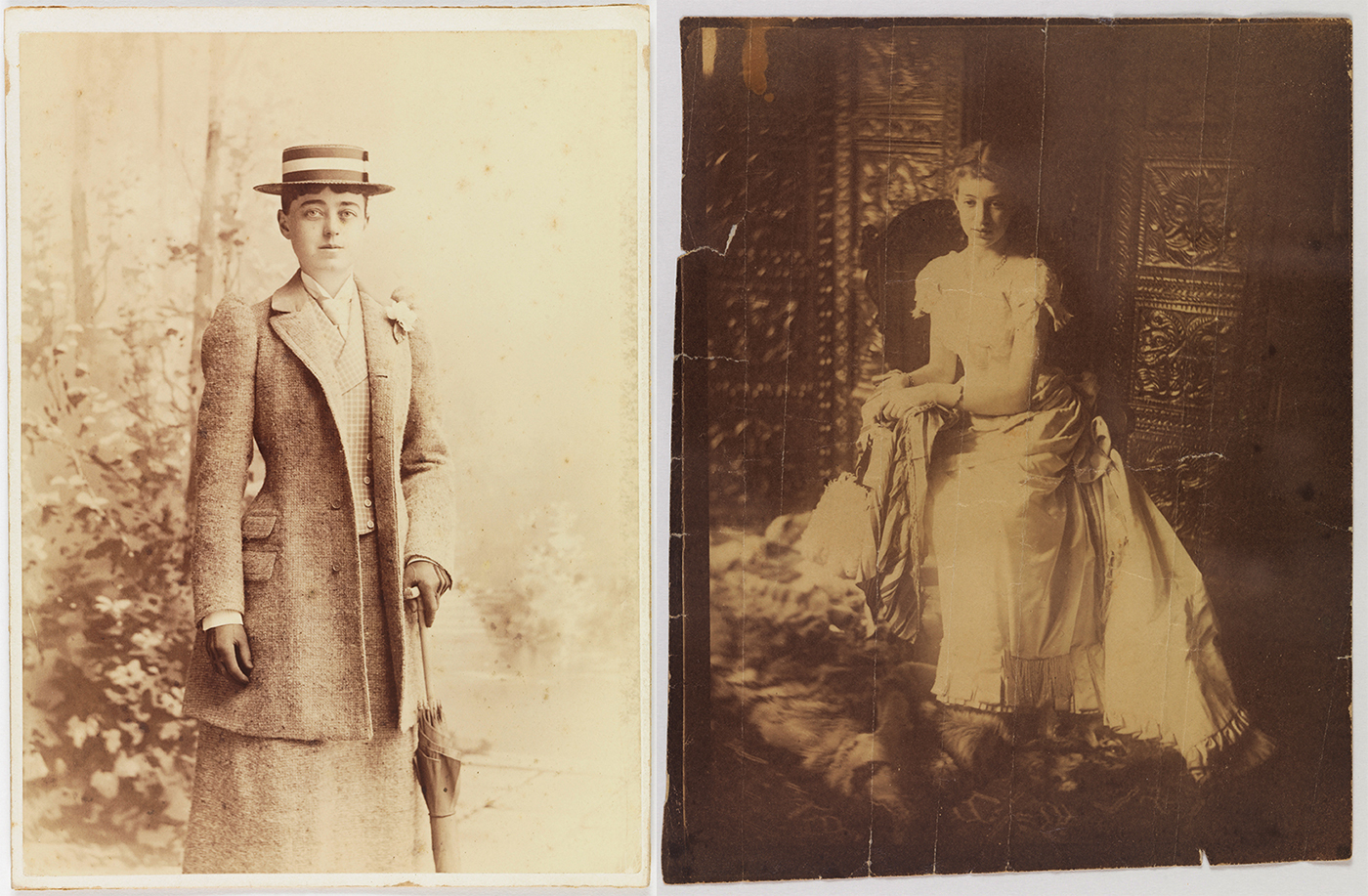
Sarah Hewitt, ca. 1890–92, and Eleanor Hewitt, ca. 1888. Collection of Anna Engesser Parmee.
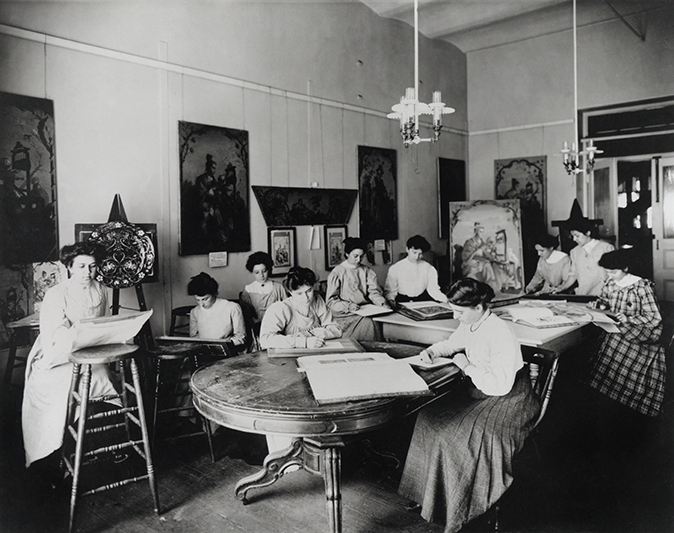
Class of the Womans Art School studying the museum’s collection, ca. 1900
1898
At his wife Louise’s urging, industrial magnate Andrew Carnegie purchases land for his new family home “far north” of where his peers are living, allowing him to build a large private garden that is one of the only such spaces in Manhattan.
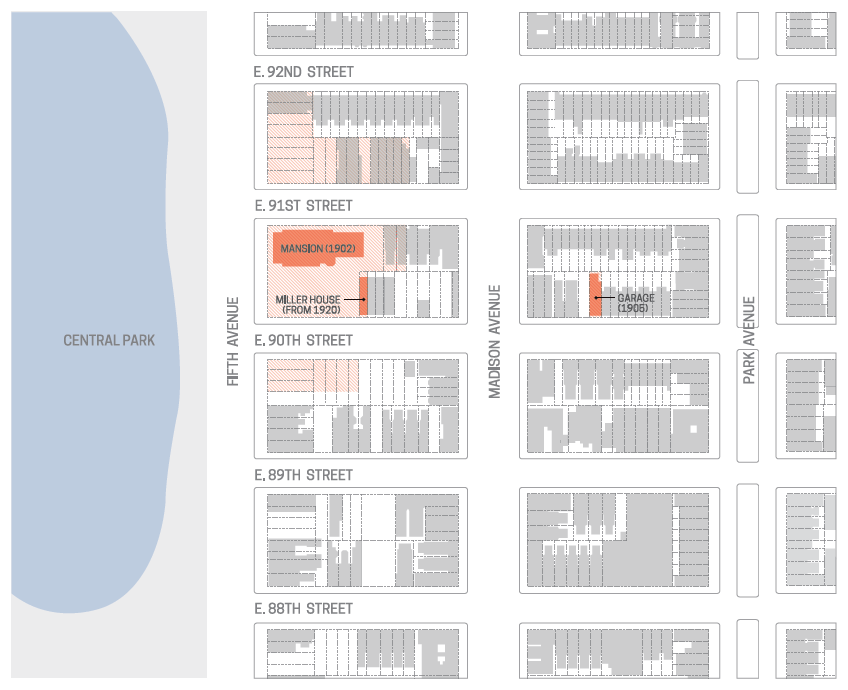
Map of the Upper East Side of Manhattan, 1911. Orange regions represent buildings occupied by the Carnegie family while orange shaded regions represent lots purchased by Carnegie.
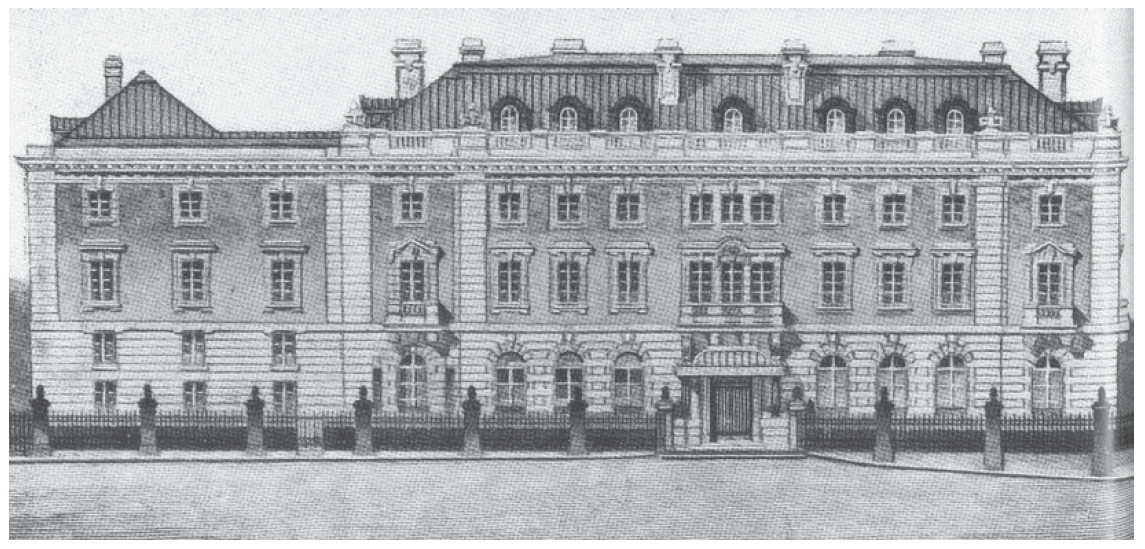
Babb, Cook & Willard’s competition drawings were first unveiled to the public in the Architectural Record of July 1899. The architects modified the plans after they won the competition; the north elevation shows the east end of the building, where they picture gallery was to be, as several stories high, rather than the single story it became.
1901
The Carnegie Mansion garden is designed by Guy Lowell, a Boston architect and landscape architect, and Richard Schermerhorn Jr., a Brooklyn native trained in civil engineering.
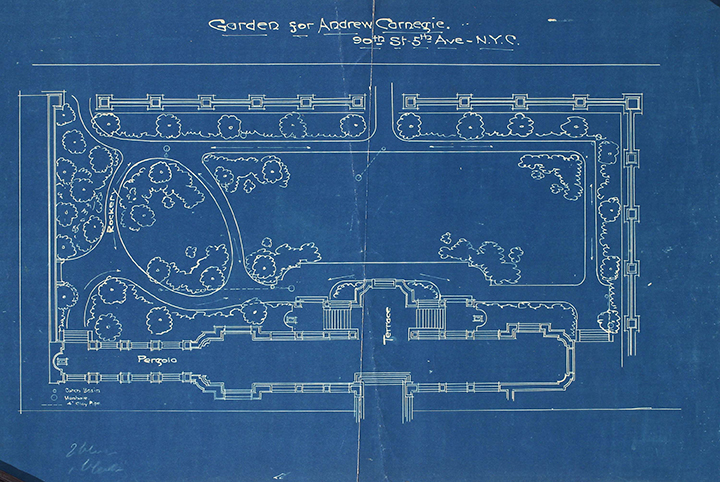
Richard Schermerhorn’s design for the Carnegie garden, 1901.
1902
The Carnegie Mansion, designed by Babb, Cook & Willard, is completed. Andrew, Louise, and their five-year-old daughter, Margaret, arrive at 2 E 91st Street for the first time on December 12. Two townhouses were built just as the Carnegie Mansion was being completed—Nos. 9 and 11 E 90th Street.
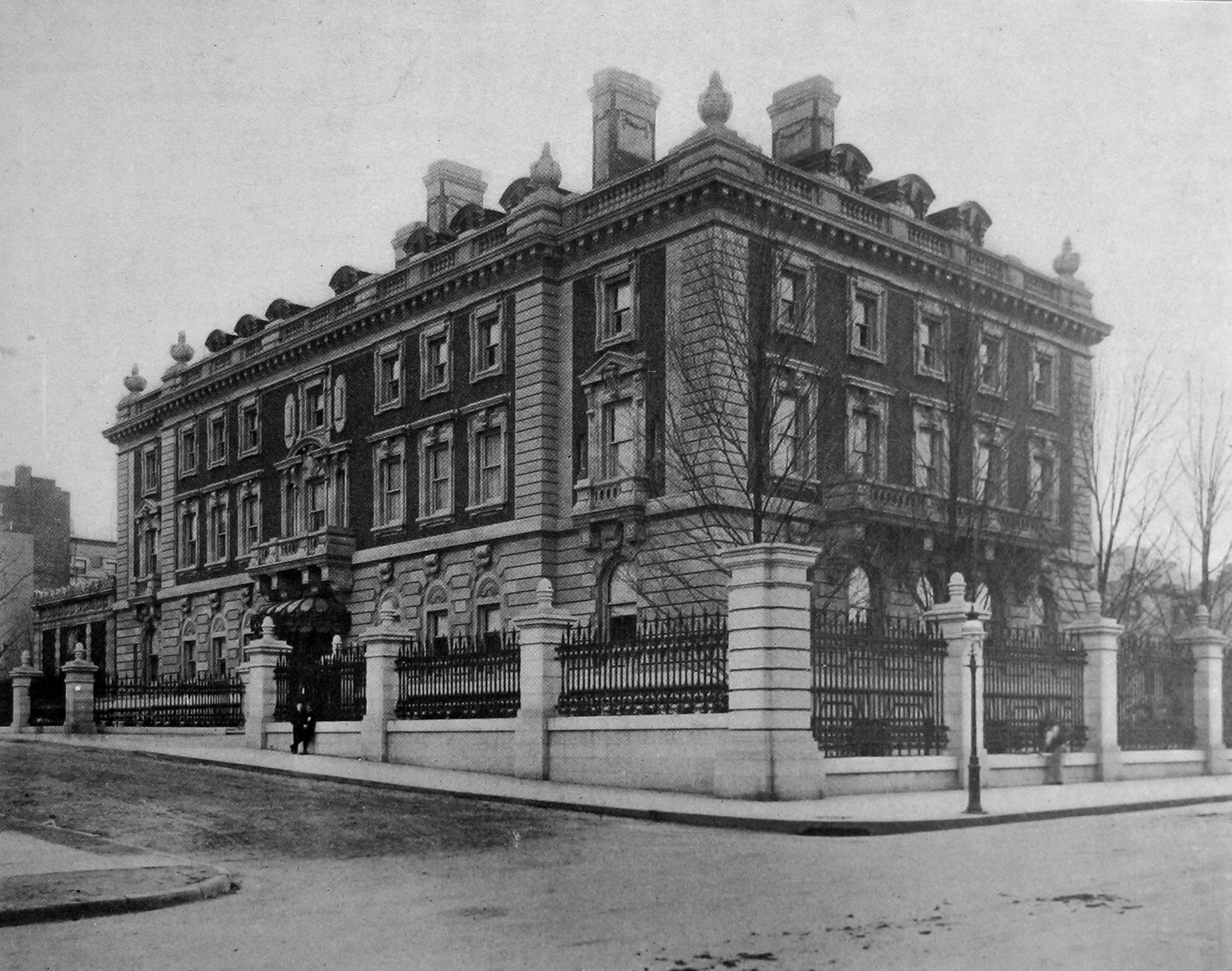
Carnegie Mansion, 1903
1919
In April, Margaret is married in the mansion. On August 22, while Andrew and Louise are away for the summer in Massachusetts, Andrew dies of pneumonia.
1920
Louise purchases the townhouse adjacent to the mansion and it becomes home to Margaret, her husband Roswell Miller, and their growing family.
1933
Calvin Hathaway is hired as assistant curator at the Cooper Union Museum, and professionalizes the museum’s practices implementing an object numbering system and thematic exhibitions as well as incorporating modern design into the museum’s collection.
1946
Louise dies on June 24, with her daughter by her bedside, leaving the mansion to the Carnegie Corporation.
1949
The Carnegie Corporation leases the mansion and 9 E 90th Street (now known as the Miller House) to the New York School of Social Work (renamed the Columbia University School of Social Work in 1963).
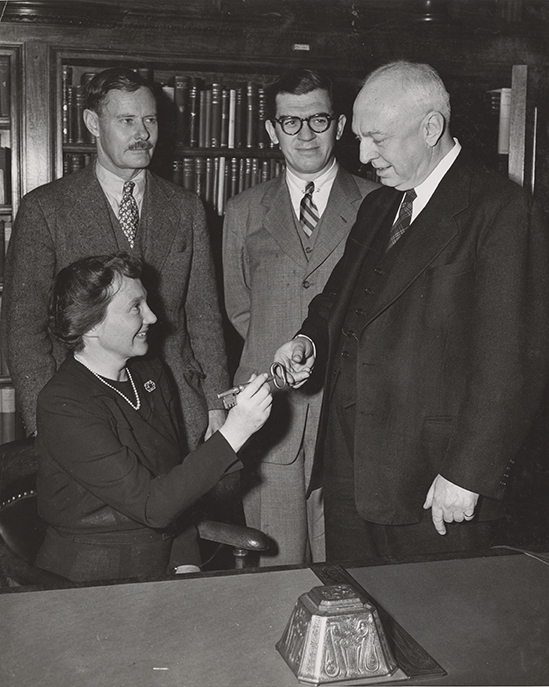
Margaret Miller (the Carnegies’ daughter), with her husband, Roswell, standing behind her, hands over the key to the Carnegie Mansion to Bayard Pope, the president of the Community Service Society, the parent organization of the New York School of Social Work, with Charles Dolland, president of Carnegie Corporation, looking on, April 14, 1949.
1963
Cooper Union announces its intention to disband the museum. The committee to save the Cooper Union Museum is formed, and its 260 members rally to keep the Cooper Union collection together and in New York City.
1966
The Carnegie Mansion is named a national historic landmark.
1967
The American Association of Museums (now the American Alliance of Museums) endorses the Smithsonian’s decision to acquire the Cooper Union Museum as part of the national collections.
1969
The Carnegie Corporation offers the mansion and the Miller house as a new home for the museum, now known as the Cooper-Hewitt Museum of Decorative Arts and Design, Smithsonian Institution. Lisa Taylor is appointed director of the museum and serves until 1987.
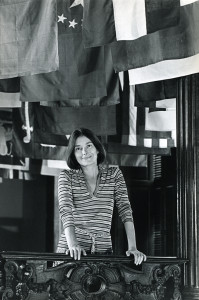
Lisa Taylor on the grand staircase of the Carnegie Mansion in 1976, with a display of flags from the inaugural exhibition MAN transFORMs.
1976
After being renovated by Hardy Holzman & Pfeiffer Associates, the Carnegie Mansion opens on October 7 as Cooper-Hewitt, The Smithsonian Institution’s National Museum of Design, with the exhibition MAN transFORMs.
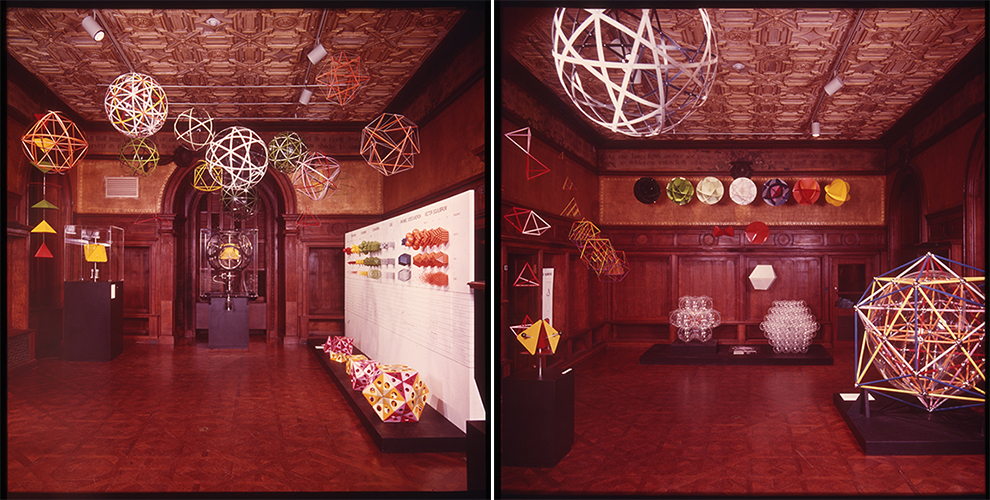
Tetrahedrons and octahedrons in Carnegie’s library served as an entry to Buckminster Fuller’s film exploring the “elegantly meshed design of the universe,” part of MAN transFORMs (October 7, 1976–February 7, 1977). Smithsonian Institution Archives.
1982
Cooper-Hewitt and Parsons School of Design start a master’s degree program in the History of Decorative Arts. Classes held at Cooper-Hewitt are taught by curators and scholars, utilizing the museum collection and that National Design Library as teaching tools.
1988
Dianne Pilgrim is appointed director of the museum and serves until 2000. Polshek & Partners Architects make the museum building and the multilevel terrace garden fully wheelchair accessible. The museum’s name changes to Cooper-Hewitt, National Design Museum.
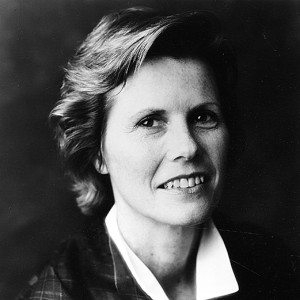
Dianne Pilgrim.
1989
Cooper-Hewitt acquires the house next door to the Miller House—11 E 90th Street (the Fox House).
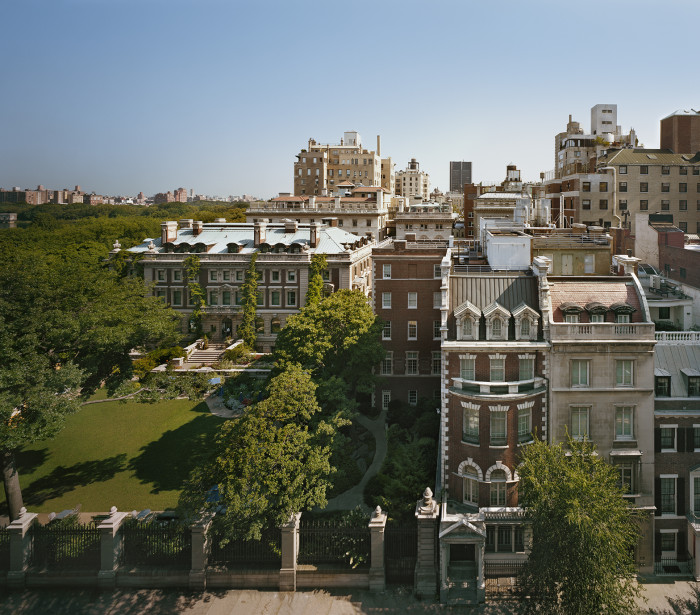
Cooper Hewitt campus, with Carnegie Mansion at left and Miller and Fox townhouses at right.
1998
Polshek & Partners are hired for a renovation project that includes a redesign of the Drue Heinz Study Center for Drawings & Prints and the Luce Study Room for American Art on the mansions’ fourth floor, the joining of the Miller and Fox townhouses, and the creation of the Agnes Bourne Bridge Gallery, linking the mansion with the townhouses.
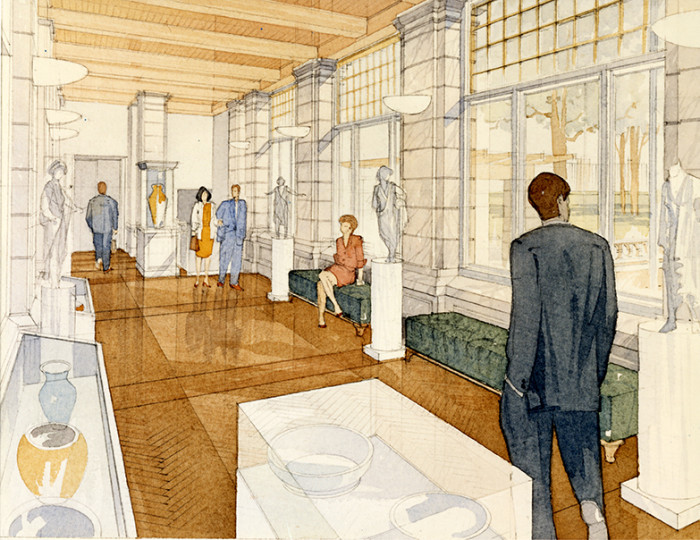
Rendering of the Agnes Bourne Bridge Gallery, ca. 1998.
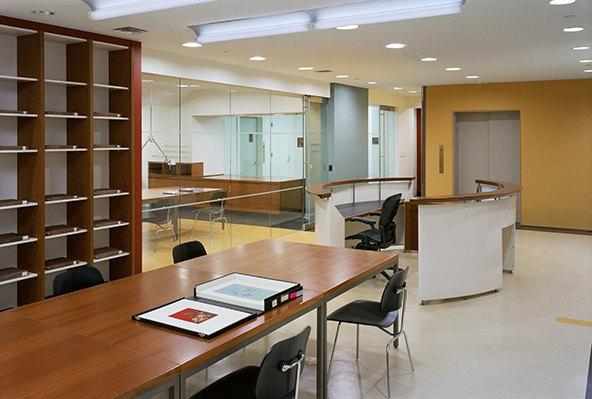
Luce Study Center
2000
The National Design Triennial exhibition series is created to regularly present key developments in American design. The National Design Awards (NDA) are inaugurated as an initiative of the White House Millennium Council to promote design as a vital humanistic tool in shaping the world.
2001
Paul Thompson is appointed director of the museum and serves until 2009.

Paul Warwick Thompson. Photo: Ben Baker.
2006
Plan to increase Cooper-Hewitt’s exhibition space begin, along with the largest capital campaign in the museum’s history. Beyer Blinder Belle Architects and Planners and Gluckman Mayner Architects are engaged to plan the renovation. National Design Week launches, making great design accessible to the public.
2010
Bill Moggridge is appointed director of the museum and serves until his death in 2012. The museum selects architects Diller, Scofidio + Renfro (2005 NDA Winner) and interactive designers Local Projects (2013 NDA Winner) to help create the new Cooper-Hewitt.

Bill Moggridge.
2011
The mansion is closed to the public and renovation begins. The National Design Library moves from the mansion to the Miller and Fox townhouses. A collection storage, conservation, and research facility is created off campus. Design in the classroom launches, introducing design thinking to New York City K–12 students.
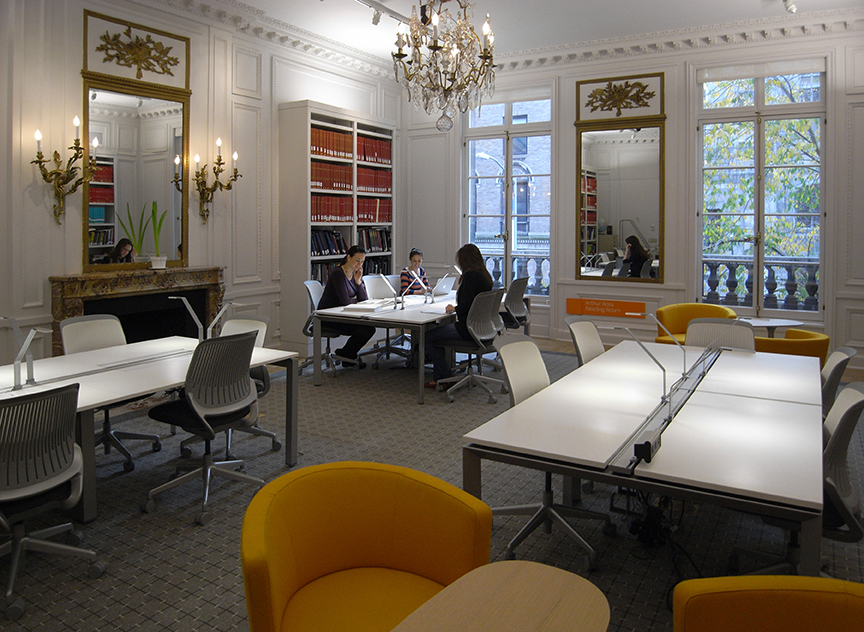
The Arthur Ross Reading Room in the Smithsonian Design Library, 2012, in the former Fox House.
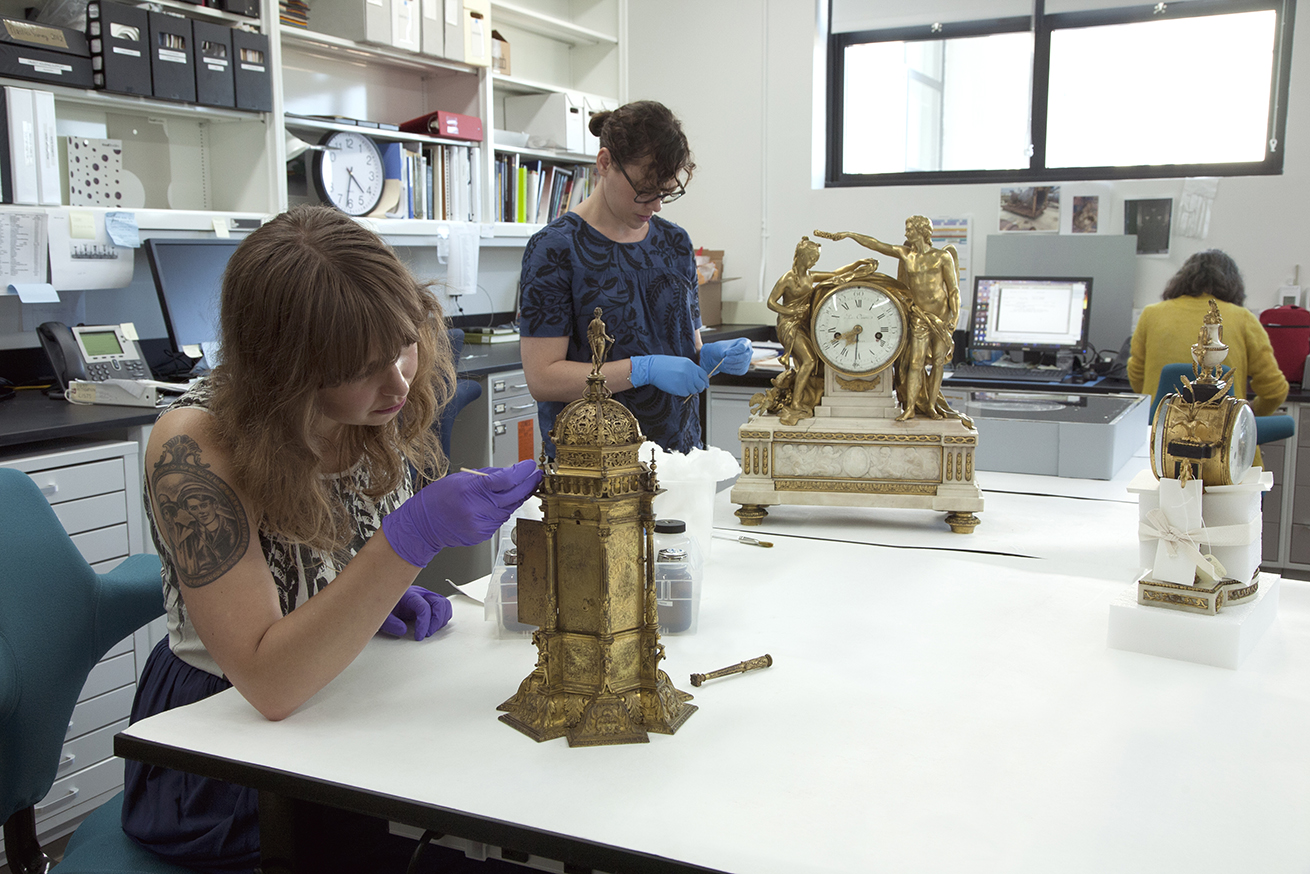
Cooper-Hewitt opened a state-of-the-art off-site location to provide space for collections storage, study, digitization, and preservation. It also includes the museum’s first object-conservation laboratory overseen by the museum’s first object conservator.
2012
The Cooper-Hewitt Design Center in Harlem opens to serve as a satellite education space during the renovation project. The museum selects graphic design firm Pentagram to rethink the visual identity of the new Cooper-Hewitt.
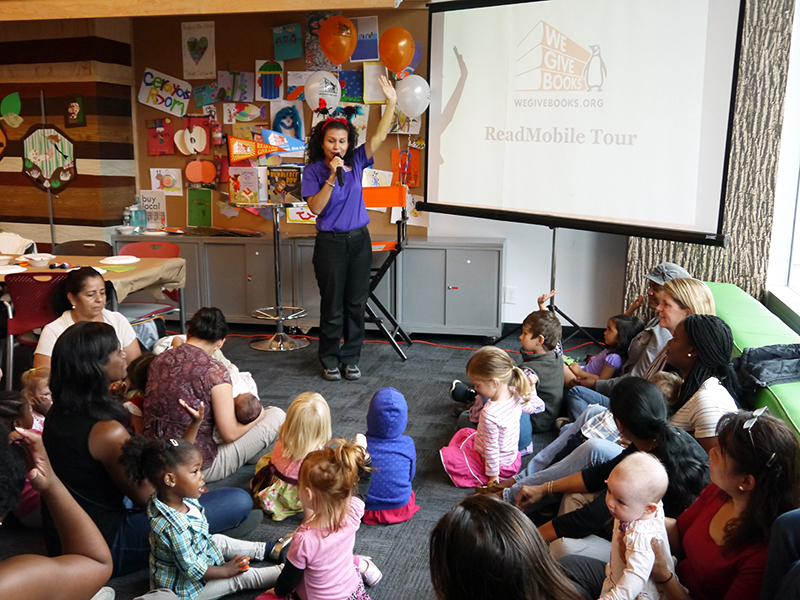
Cooper-Hewitt’s Harlem Design Center
2013
Caroline Baumann is appointed director of the museum and serves until 2020. Cooper Hewitt launches national Design in the Classroom program. Walter Hood Design Studio (2009 NDA Winner) is hired to redesign garden.

Caroline Baumann, Director, Cooper Hewitt, Smithsonian Design Museum. © Erin Baiano
2014
Fifteenth anniversary of the National Design Awards. The museum’s name changes to Cooper Hewitt, Smithsonian Design Museum. The renovated museum opens to the public on December 12 with a new way to experience design.
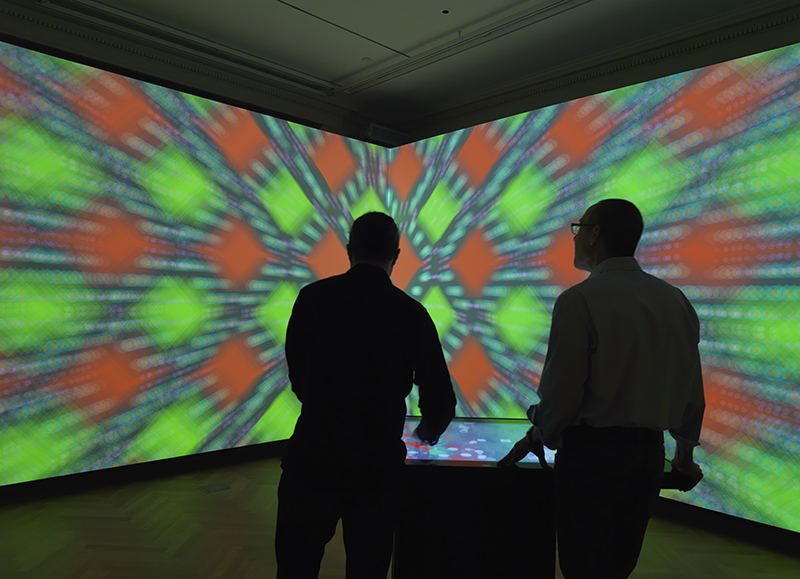
Wallpaper Immersion Room
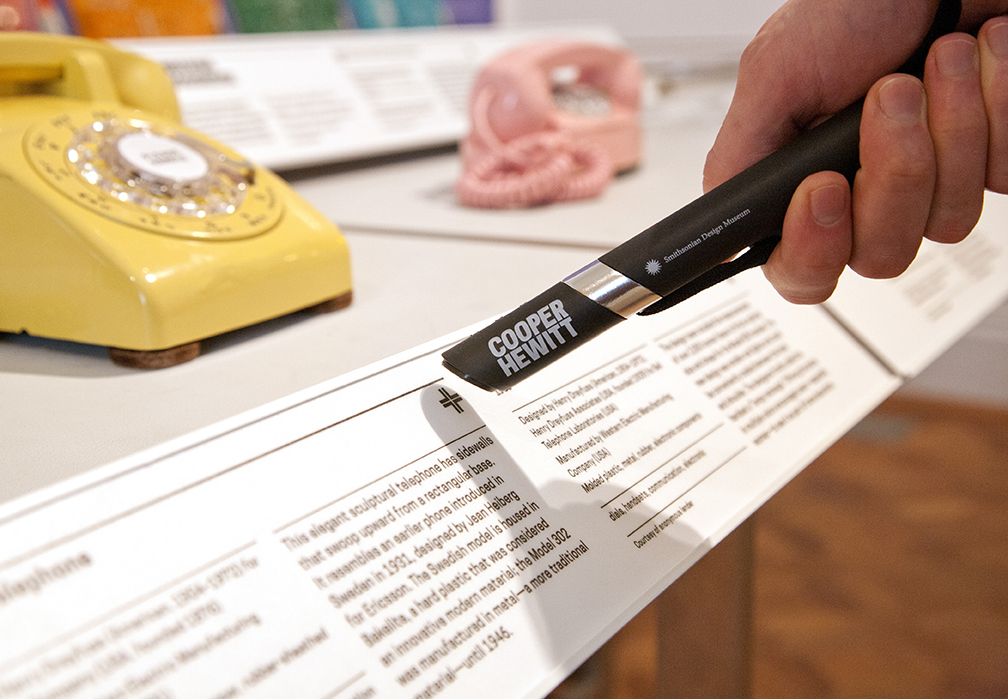
The Pen
2015
Reopening of Arthur Ross Terrace and Garden. Mansion renovation achieves LEED Silver certification.
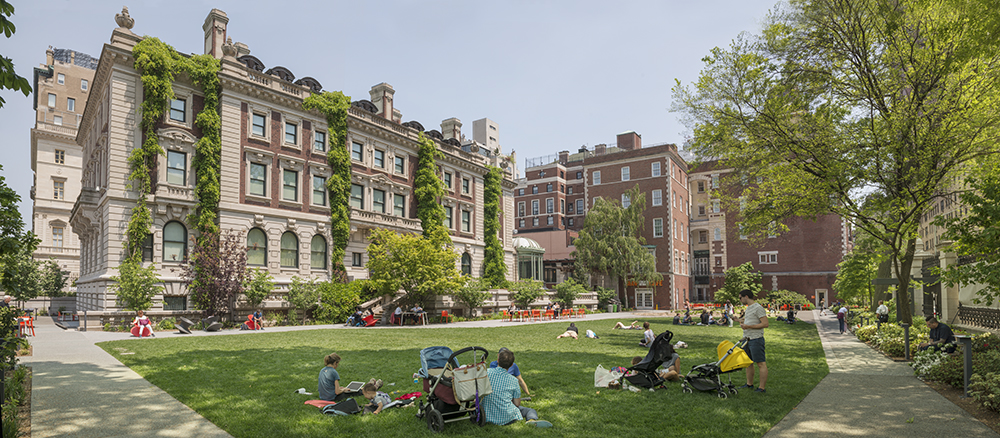
Arthur Ross Terrace & Garden
2016
Museum welcomes record number of visitors. Digitization of over 200,000 collection objects completed. New York Landmarks Conservancy honors Cooper Hewitt with Lucy G. Moses Preservation Award.
2022
Maria Nicanor named director of Cooper Hewitt, Smithsonian Design Museum.
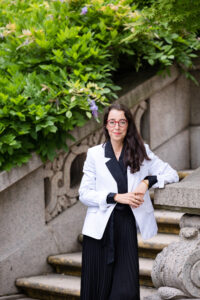
Maria Nicanor, Director, Cooper Hewitt, Smithsonian Design Museum. Photo: Liz Ligon
2023
Digital curatorial department is established to collect and care for born-digital work. The Digital department is the first entirely new collecting department at Cooper Hewitt in more than 125 years.
Featured Image: Collection of Plaster Casts, Cooper Union Museum for the Arts of Decoration, ca. 1920.